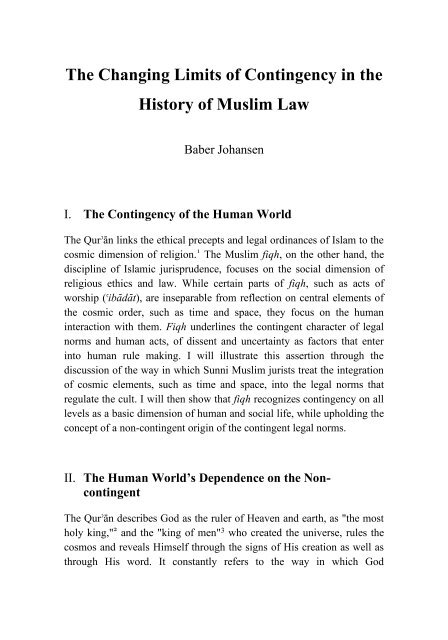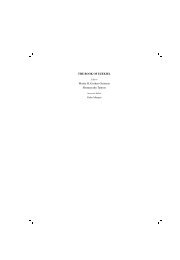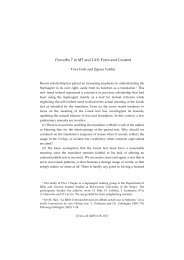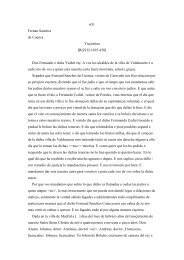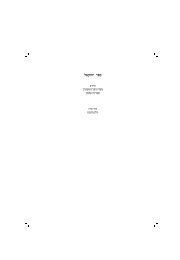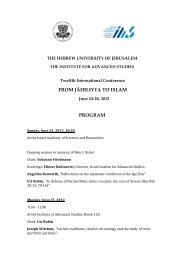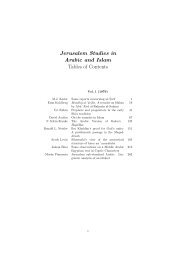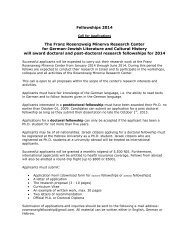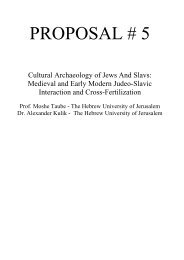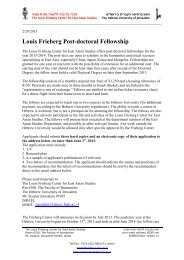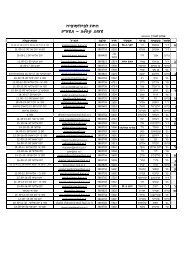Baber Johansen
Baber Johansen
Baber Johansen
Create successful ePaper yourself
Turn your PDF publications into a flip-book with our unique Google optimized e-Paper software.
The Changing Limits of Contingency in the<br />
History of Muslim Law<br />
<strong>Baber</strong> <strong>Johansen</strong><br />
I. The Contingency of the Human World<br />
The QurÞÁn links the ethical precepts and legal ordinances of Islam to the<br />
cosmic dimension of religion. 1 The Muslim fiqh, on the other hand, the<br />
discipline of Islamic jurisprudence, focuses on the social dimension of<br />
religious ethics and law. While certain parts of fiqh, such as acts of<br />
worship (ÝibÁdÁt), are inseparable from reflection on central elements of<br />
the cosmic order, such as time and space, they focus on the human<br />
interaction with them. Fiqh underlines the contingent character of legal<br />
norms and human acts, of dissent and uncertainty as factors that enter<br />
into human rule making. I will illustrate this assertion through the<br />
discussion of the way in which Sunni Muslim jurists treat the integration<br />
of cosmic elements, such as time and space, into the legal norms that<br />
regulate the cult. I will then show that fiqh recognizes contingency on all<br />
levels as a basic dimension of human and social life, while upholding the<br />
concept of a non-contingent origin of the contingent legal norms.<br />
II. The Human World’s Dependence on the Noncontingent<br />
The QurÞÁn describes God as the ruler of Heaven and earth, as "the most<br />
holy king," 2 and the "king of men" 3 who created the universe, rules the<br />
cosmos and reveals Himself through the signs of His creation as well as<br />
through His word. It constantly refers to the way in which God


